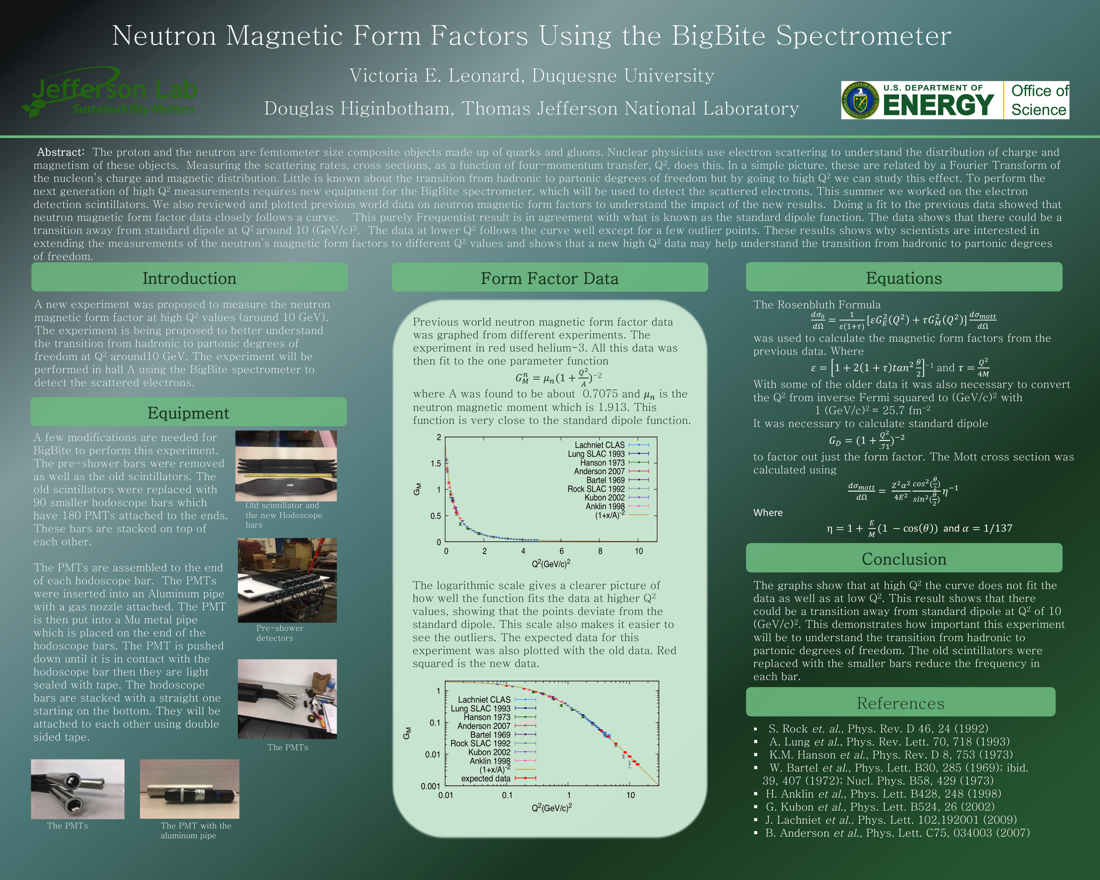Undergraduate Research at Jefferson Lab
Neutron Magnetic Form Factors Using the BigBite Spectrometer
Student: Victoria Leonard
School: Duquesne University
Mentored By: Douglas Higinbotham
The proton and the neutron are femtometer size composite objects made up of quarks and gluons. Nuclear physicists use electron scattering to understand the distribution of charge and magnetism of these objects. Measuring the scattering rates, cross sections, as a function of four-momentum transfer, Q2, does this. In a simple picture, these are related by a Fourier Transform of the nucleon's charge and magnetic distribution. Little is known about the transition from hadronic to partonic degrees of freedom but by going to high Q2, we can study this effect. To perform the next generation of high Q2 measurements requires new equipment for the BigBite spectrometer, which will be used to detect the scattered electrons. This summer we worked on the electron detection scintillators. We also reviewed and plotted previous world data on neutron magnetic form factors to understand the impact of the new results. Doing a fit of the previous data showed that neutron magnetic form factor data closely follows the curve This purely Frequentist result is in agreement with what is known as the standard dipole function. The data shows that there could be a transition away from standard dipole at Q2 around 10 (GeV/c)2. The data at lower Q2 follows the curve well except for a few outlier points. These results show why scientists are interested in extending the measurements of the neutron's magnetic form factors to different Q2 values and shows that a new high Q2 data may help understand the transition from hadronic to partonic degrees of freedom.

Citation and linking information
For questions about this page, please contact Education Web Administrator.
